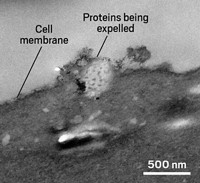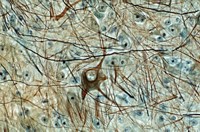Advertisement
Grab your lab coat. Let's get started
Welcome!
Welcome!
Create an account below to get 6 C&EN articles per month, receive newsletters and more - all free.
It seems this is your first time logging in online. Please enter the following information to continue.
As an ACS member you automatically get access to this site. All we need is few more details to create your reading experience.
Not you? Sign in with a different account.
Not you? Sign in with a different account.
ERROR 1
ERROR 1
ERROR 2
ERROR 2
ERROR 2
ERROR 2
ERROR 2
Password and Confirm password must match.
If you have an ACS member number, please enter it here so we can link this account to your membership. (optional)
ERROR 2
ACS values your privacy. By submitting your information, you are gaining access to C&EN and subscribing to our weekly newsletter. We use the information you provide to make your reading experience better, and we will never sell your data to third party members.
Drug Development
Swiss biotech restores motor function in mice with Parkinson’s disease
Gain Therapeutics will test the drug in patients this year
by Rowan Walrath
February 28, 2024

A Swiss biotechnology firm has restored motor function in mice with Parkinson’s disease, paving the way for human trials later this year.
In a presentation at the WORLDSymposium conference earlier this month, Gain Therapeutics described a small molecule that enhances the activity of the lysosomal enzyme glucocerebrosidase, better known as GCase. The Gain team believes that by bolstering the enzyme’s activity, the compound, GT-02287, would enhance the lysosome’s ability to clear waste. That would in turn improve mitochondrial function and decrease the incidence of cell death in people with Parkinson’s linked to mutations in GBA1, the gene that encodes for GCase.
So far, that approach has worked—in rodent models. Gain’s preclinical study showed a restoration of motor function over a 3-week period in mice who’d been injected with α-synuclein (αSyn)-preformed fibrils and GCase-inhibited rat neurons to mimic GBA1 Parkinson’s disease. The mice took GT-02287 every day starting either 4 or 8 days after their injury. After taking GT-02287, the mice also had less of the biomarker neurofilament light chain (Nfl) in their bloodstreams. That finding suggests that GT-02287 is protecting neurons, according to Gain CEO Matthias Alder, since Nfl effectively falls off the cells when they die and enters the blood.

“It’s really exciting because we have seen such a dramatic effect in our animal models, and I believe the effect is due to the fact that we’re treating the disease at the beginning of the disease cascade,” Alder says. “We’re not a gene therapy because we’re not fixing the gene itself. But we’re as close as you can get to a gene therapy with a small molecule. We’re fixing the protein expressed with a defective gene.”
Mutated GBA1 is a well-known risk factor for Parkinson’s disease: around 9.1% of GBA carriers develop the disorder, according to a literature review published in Cells in 2019. Inside the cell, mutated GBA1 codes for misfolded, dysfunctional GCase. If this mutant enzyme is made, it gets stuck in the endoplasmic reticulum, putting stress on the cell. There, it degrades, and crucially, it never gets to the lysosome—the waste-storing organelle. As Alder puts it, without that enzyme, the lysosome becomes an “overflowing waste bin” and eventually kills the cell.
Other Parkinson’s treatments have centered on dopamine replacement therapies. Those treatments can alleviate symptoms, but they don’t stop brain cells from dying, Alder says.
If GT-02287 can restore function in humans, it would represent a huge shift in how Parkinson’s disease is treated. So far, Gain has tested GT-02287 in human volunteers without Parkinson’s. Alder says data out of that trial have shown the molecule to be safe, but Gain has yet to enroll patients with Parkinson’s.
Clinical data for other GCase enhancers have been less robust than preclinical data, points out Jason Gestwicki, a professor of pharmaceutical chemistry at the University of California San Francisco Weill Institute for Neurosciences.
“The underlying causes of Parkinson’s disease are complex, so efforts to explore GCase as another putative target are worth considering,” Gestwicki says. “I’ll be interested to learn how they select patients for the efficacy trial, given the complex underlying causes of Parkinson’s disease.”
Gain will add a patient arm to its Phase 1 trial in the third quarter. At that time, people with GBA1 Parkinson’s will take the medicine—a powder sprinkled into a fluid—daily or twice a day for 3 months.
Meanwhile, Alder and his team are also making plans for GT-02287 in other disorders associated with GBA1 mutations, including Gaucher disease and dementia with Lewy bodies. To carry out those plans, though, Gain will need to generate the kinds of data that spur investment, and soon.
The firm posted a $4.7 million net loss for the third quarter of 2023 and has yet to report fourth-quarter and full-year financials. In its third-quarter report, Gain estimated it had enough runway to last it through the third quarter of 2024. The company’s chief financial officer resigned last week.
“Life in biotech, it feels like dog years,” Alder says. “A lot is going to happen in a very compressed period of time.”





Join the conversation
Contact the reporter
Submit a Letter to the Editor for publication
Engage with us on Twitter